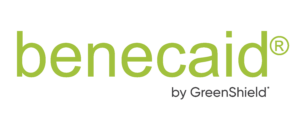Defined contribution health benefits plans are relatively new to the Canadian benefits market and are increasing in popularity as the workforce demographics shift. While defined benefit plans have been the industry standard for many years, defined contribution plans, or what we at Benecaid call “employee directed” benefits plans, are becoming increasingly popular in Canada.
What is a defined contribution plan and are all plans the same? It is important to note that not all plans marketed as defined contribution provide a true defined contribution. Don’t let your clients be fooled, make sure you know the differences.
What does defined contribution mean?
In a traditional benefit plan, the employer decides which benefits to provide their employees and each benefit type has a limit. For example, $25,000 in annual prescription drug coverage, $250 every two years for vision, 4 massages, etc.
With a defined contribution plan, the employer decides on a total dollar amount to contribute towards each employee, and the employees then determine how best to spend those funds on eligible health and dental expenses.
A true defined contribution plan should provide complete budget certainty for the employer to know exactly how much their plan will cost each year regardless of how many claims are submitted by employees, or the selections made by employees with those funds.
How to spot the difference?
Insurance premiums/Employer funding
Some plans offer the option to add flexible spending accounts to traditional health insurance policies. While the spending accounts themselves have a defined contribution element, the insurance portion is still funded by the employer separately which leaves the employer exposed to the risk (and often eventuality) of annual increases.
A true defined contribution plan, like those offered through Benecaid’s Honeybee platform, allows employers to deposit a set amount into a Health Account for each employee. Employees use the funds in their Health Account to select and pay for their insurance plans. The remaining funds are free to be used for flexible spending on products and services customized by the employer. Every spending decision is made from within the account, including the premiums for insurance.
Employee Choices
While plans offering flexible spending accounts do give employees more choice than traditional health benefits, all employees are still given the same primary coverage, regardless of their individual needs. These plans do not address the different needs of multiple generations within today’s modern workforce.
With the Honeybee platform, employees are empowered to personalize aspects of their coverage and control their premiums. Not every employee will value benefits the same way, so why give them all the same rigid plan? Plans offered through Honeybee give employees the opportunity to tailor their coverage by selecting prescription drug deductibles and dental co-insurance levels based on their unique needs. This customization can be used to lower plan costs leaving employees with more flexible funds. Employees can even use the flexible funds in their Honeybee Health Account to pay for their deductibles or co-insurance if needed, and if not required can be used towards any of the many CRA approved expenses for health spending accounts.
Renewal Process
The biggest challenge for small and medium-sized businesses is the uncertainty of renewal rates and the possibility of significant annual increases. The appeal of a defined contribution plan is a fixed contribution that doesn’t need to increase each year.
Many defined contribution “style” plans believe that by stripping paramedical expenses out of the insurance coverage they are adequately protecting business owners against large increases (less insurance, less premium to increase). However, prescription drugs can be a big driver of premium, so this isn’t always the case. Plans that are merely adding flexible accounts in addition to a traditional insurance plan don’t provide any options for the employer when the rate increase hits – the employer isn’t going to take back funds from the employee accounts to offset the increase and risk a mutiny! The employer will have to decide between increasing overall costs, or offsetting the insurance increase by reducing the amount in the flexible accounts.
By contrast, Honeybee insurance plans are purchased with the funds within each employee’s account. If the price of a plan increases, each employee has the option to change his or her deductible or co-insurance levels each year, which empowers them to make choices and manage account balances for his or her specific needs. Employers have the opportunity each year to increase funding levels or keep them the same. And with the addition of voluntary benefits, employees have even more choice!
Getting started with Honeybee
Honeybee provides companies with an easy way to offer a true defined contribution plan that is sustainable year-after-year and is highly valued by their employees. Business owners will love the fixed budget approach and employees will appreciate coverage they can use.
There are two ways Advisors can easily start offering Honeybee benefits to their clients:
- Let us help: Send clients your personal Honeybee web link that includes your tracked Advisor code. Reach out to your Benecaid Executive Benefits Consultant today for your personalized link. Our Honeybee experts can support your clients through their configuration by phone, text or instant chat.
- Virtual client meeting: Pre-configure a Honeybee plan for your client and send them the link. You can set up a virtual meeting or conference call to go through the plan and tweak the coverage. Save time by hosting meetings online through a free screen sharing program like join.me.
For more information on how you can get started selling Honeybee benefits contact your Benecaid Executive Benefits Consultant through email at advisors@benecaid.com or click here to book a demo today!



Comments are closed.